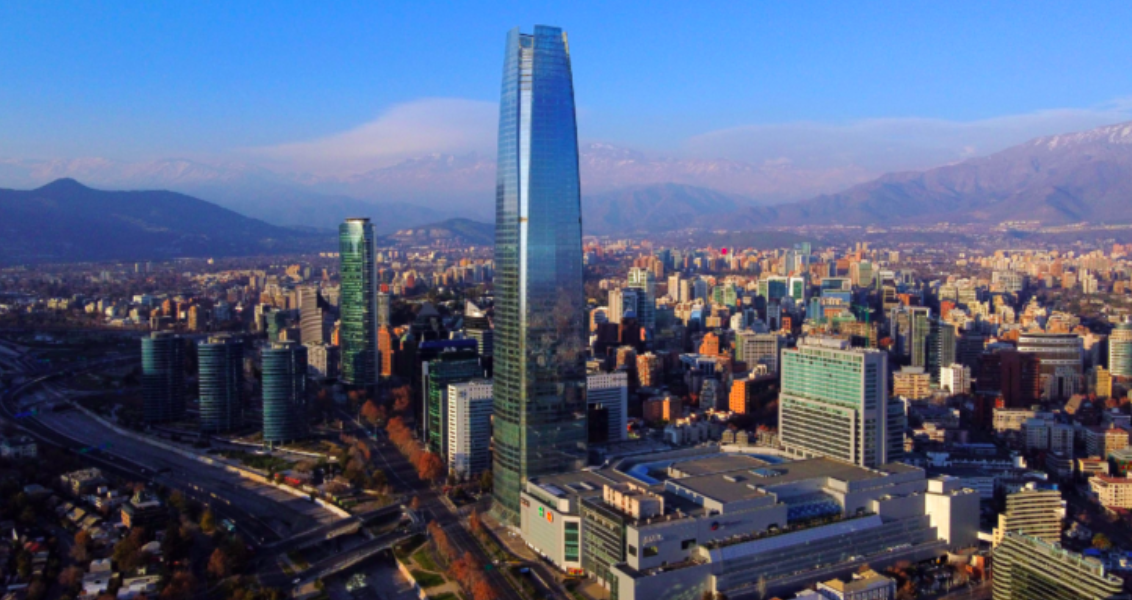RIO DE JANEIRO, BRAIL – In its work to expand statistical information, the Central Bank presented this Thursday the quarterly Gross Domestic Product (GDP), broken down by macrozones.
According to preliminary information from the Quarterly National Accounts, the Gross Domestic Product (GDP) grew 7.2% compared to the first quarter of the previous year. For its part, household consumption (CHog) registered a growth of 13.9% in twelve months, said the Bank.
Read also: Check out our coverage on Chile
In line with the regional breakdown by macrozones, it added, “GDP growth was explained by positive indices in all macrozones”, highlighting the Metropolitan region, followed by the central and southern zones.
The southern zone was the one with the lowest index in the national result.

In national terms, “the growth of the activity was mainly explained by the contribution of services, highlighting personal services, transportation and business services,” published the Central Bank.
In household consumption, spending on services (particularly those related to health, restaurants and hotels, and transportation) and non-durable goods (clothing and fuel) stood out for their contribution.
NORTH MACROZONE
The Arica and Parinacota region registered growth of 9.9%, a result explained by the dynamism of services. In line with the above, household consumption in the region grew by 12.7%, affected by all its components, with the contribution of services standing out.
The Tarapacá region grew 6.3%. The positive contribution of services stood out, followed by the rest of goods. The result was partly offset by the negative impact of mining in the region. Household consumption expanded 18.9%, reflecting the high dynamism of services and the consumption of non-durable goods.
Antofagasta presented a growth of 2.3%. The result was explained by the effect of services, and was partially offset by mining. The 9.8% growth in household consumption was influenced by both the services component and the non-durable goods component.
Meanwhile, the Atacama region grew 3.5% in the first quarter, reflecting the positive contribution of services. For its part, household consumption grew 9.1% in the region, a result that was explained by the consumption of services, followed in relevance by the consumption of non-durable goods.
CENTRAL MACROZONE
The Coquimbo region presented a variation of 0.2%. This result was explained by the positive effect of services, which was offset by the negative impact of mining in the region. The 13.2% growth in household consumption was explained by both the consumption of services and non-durable goods.
Valparaíso expanded 10.7% in the first quarter. This result was mainly explained by the services component. Regarding household consumption in the region, the 12.9% growth was explained by both the consumption of services and non-durable goods.
METROPOLITAN REGION
In the Metropolitan region of Santiago, the growth of 9.2% was explained by services. Similarly, the growth in household consumption of 11.2% was driven by services, followed by the consumption of non-durable goods.
SOUTH CENTRAL MACROZONE
The region of Libertador General Bernardo O’Higgins presented a drop of 1.3% in terms of activity. This drop was the reflection of negative contributions from mining and other goods. The result was partly offset by the positive contribution of services. For its part, household consumption in the region grew by 9.5%, mainly influenced by the consumption of services.
The Central Bank added that in the Maule region there was a variation of 1.8% in activity, reflecting the positive contribution of services, which were partially offset by the rest of goods. Household consumption in the region grew by 16.8%, explained by the dynamism in the consumption of non-durable goods, followed by services.
The 7.3% growth in the Ñuble region was explained by the positive contribution of services, while the 19.6% growth in household consumption in the region reflected the positive contribution of non-durable goods, followed by consumption of services.
The Bío Bío region grew 5.8% during the quarter, a result influenced by the contribution of services in the region. Household consumption grew 16.3%, mainly explained by consumption of non-durable goods.
SOUTH MACROZONE
In La Araucanía there was a growth of 9.5%, which was explained mainly for the provision of services. For its part, household consumption in the region expanded 24.1%, reflecting the positive contributions of the consumption of non-durable goods and services.
The Los Ríos region registered a growth of 6.4% in the period. This result was a reflection of service activities in the region. For its part, household consumption grew 23.5%, highlighting the incidences of consumption in non-durable goods and services.
The growth of 11.2% in the Los Lagos region was the reflection of positive contributions in all lines of activity, highlighting the index of services. For its part, household consumption in the region grew 26.1%, explained by the consumption of services, followed by the consumption of non-durable goods.
AUSTRAL MACROZONE
The activity in the Aysén region presented a variation of 2.0%, a result that was explained by the contribution of services and mining, which were partially offset by the negative contribution of the rest of the goods. Household consumption in the region grew by 14.2%, influenced by the services component and, to a lesser extent, by the consumption of non-durable goods.
Finally, the Magallanes region grew 5.9%, explained mostly by the provision of services. From the perspective of expenditure, household consumption registered a growth of 17.8% as a result of the dynamism of services.

